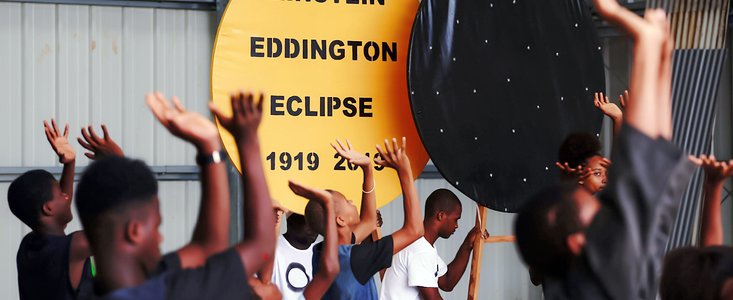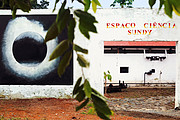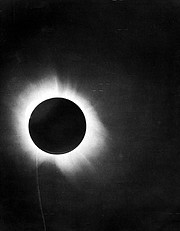- News
- Science
- Scientific Bodies
- Divisions
- Commissions
- Commission A1 Structure
- Commission A2 Structure
- Commission A3 Structure
- Commission A4 Structure
- Commission B1 Structure
- Commission B2 Structure
- Commission B3 Structure
- Commission B4 Structure
- Commission B5 Structure
- Commission B6 Structure
- Commission B7 Structure
- Commission C1 Structure
- Commission C2 Structure
- Commission C3 Structure
- Commission C4 Structure
- Commission D1 Structure
- Commission E1 Structure
- Commission E2 Structure
- Commission E3 Structure
- Commission E4 Structure
- Commission F1 Structure
- Commission F2 Structure
- Commission F3 Structure
- Commission F4 Structure
- Commission G1 Structure
- Commission G2 Structure
- Commission G3 Structure
- Commission G4 Structure
- Commission G5 Structure
- Commission H1 Structure
- Commission H2 Structure
- Commission H3 Structure
- Commission H4 Structure
- Commission J1 Structure
- Commission J2 Structure
- Commission J3 Structure
- Commission X1 Structure
- Commission X2 Structure
- Past Commission Organising Committees
- Working Groups
- Centres
- Scientific Meetings
- Rules & Guidelines
- General Assemblies
- Meeting Proposals
- Future IAU Meetings
- General Assemblies
- EC Meetings
- Officers' Meetings
- Regional Meetings
- Symposia
- Focus Meetings
- Institutional Meetings
- IAU Offices Meetings
- IAU-Sponsored Meetings
- Letters of Intent submitted for 2024
- Letters of Intent submitted for 2023
- Letters of Intent submitted for 2022
- Letters of Intent submitted for 2021
- Letters of Intent submitted for 2020
- Past IAU Meetings
- Templates
- Other Meetings
- Grants & Prizes
- Scientific Bodies
- Publications
- IAU Publications
- IAU Strategic Plan
- Symposia
- WGSBN Bulletins
- Regional Meetings
- Information Bulletins/Catalyst
- E-Newsletters
- Focus Meetings
- Transactions A
- Transactions B
- Related Publications
- GA Newspapers
- CAPjournal
- IAU Books
- Brochures
- IAU Offices
- WG Reports
- Commission Reports
- Division Reports
- Past IAU Publications
- Rules, Guidelines and Instructions for Proceedings
- Publishers
- IAU Publications
- Administration
- About the IAU
- Statutes & Rules
- IAU Policies
- IAU Executive Bodies
- IAU Secretariat
- Resolutions
- Members Administration
- Administrative Dates & Deadlines
- International Organisations Relations
- Donate to the IAU
- Training in Astronomy
- Astronomy for Education
- Astronomy for Development
- Astronomy for the Public
- Office for Astronomy Outreach
- FAQ
- Themes
- Satellite Constellations
- Astronomy in Everyday Life
- How to Report a Discovery
- Careers in Astronomy
- Defining our Place in the Cosmos
- The Constellations
- Light Pollution
- Measuring the Universe
- Near Earth Objects
- How to Participate in Astronomy Research
- Naming of Astronomical Objects
- Naming of Exoplanets
- Buying Star Names
- Naming Stars
- Pluto and the Solar System
- IAU Member Statistics
- Our Moon: the Moon
- Meteors & Meteorites: The IAU Definitions of Meteor Terms
- UNESCO-IAU Portal to the Heritage of Astronomy
- Social Media
- Past Events
- Call for Online Resources
- Astronomy@Home Awards
- Contact
iau1907 — Press Release

29 May 2019
Global Astronomical Community Celebrates the 100th Anniversary of 1919 Solar Eclipse
2019 marks the 100th anniversary of the paradigm-shifting solar eclipse observations that successfully tested Einstein’s general theory of relativity for the first time. The International Astronomical Union, within the framework of its own centenary celebrations, is supporting various initiatives on the theme of the 1919 Solar Eclipse, including conferences, celebratory events, educational activities, and more. This also includes a celebration in São Tomé and Príncipe with the participation of the President of São Tomé and Príncipe and the President of Portugal.
In 1915, Albert Einstein published his general theory of relativity, which to this day remains the best description of gravitation that physicists have. Shortly thereafter, the British astronomer Sir Arthur Eddington set out to verify it experimentally, by testing its prediction that light would be deflected by the Sun. Since the experiment involved viewing stars that are close to the Sun, it could only be conducted during a total solar eclipse. The solar eclipse of 29 May 1919 presented the perfect opportunity to take the measurements, so expeditions were organised to two locations where the eclipse would be total: Sobral (Brazil) and São Tomé and Príncipe off the coast of Africa. Sir Frank Watson Dyson coordinated the expeditions from England, dispatching Eddington to Príncipe and French astronomer Andrew Crommelin to Sobral. The results were compatible with Einstein’s theory and diverged significantly from Newtonian gravity. Since then, many further experiments have been carried out to test general relativity, which is widely used in modern physics and astrophysics.
In 2019, the International Astronomical Union, as part of its centenary celebrations, is commemorating the 100th anniversary of the 1919 solar eclipse by supporting several initiatives worldwide:
-
Eddington@Sundy: 100 Years Later is celebrating the 100th anniversary of the 1919 eclipse, promoting educational activities, conferences and other initiatives on a global scale. However, its main goal is to act as a cornerstone project supporting the local community to create a historic and scientific legacy in São Tomé and Príncipe, especially at the Roça Sundy site, where Eddington carried out those historic measurements in 1919. Today on 29 May, the President of São Tomé and Príncipe, Evaristo do Espírito Santo Carvalho, the President of the Regional Government of Príncipe, José Cardoso Cassandra, and the President of Portugal, Marcelo Rebelo de Sousa, will participate in the inauguration of the Sundy Science Space at Roça Sundy to commemorate the anniversary of the eclipse. The IAU President Ewine van Dishoeck and the IAU General Secretary Teresa Lago will also take part in the ceremony.
-
The Centenary of Solar Eclipse of 1919 — Sobral event includes many celebratory activities in Brazil. In Sobral, the Brazilian site of the 1919 observations, the local population is enthusiastically participating in the celebrations, and the local authorities have decreed 2019 the Year of Science in the city. Many scientific, educational and public communication events will take place there and in other Brazilian cities. Additionally, the International Meeting of the Centennial of the Eclipse of Sobral (1919–2019) will take place on 28–30 May, and the issue of a commemorative stamp by the Brazilian post office and the re-opening of the Eclipse Museum in Sobral are planned.
-
The IAU100 Einstein Schools Global Project is creating a network of schools encouraging the understanding of the essential role of gravity in modern astronomy through exciting astronomical topics. These include gravitational waves, space-time, and the detection of gravitational waves emitted from compact objects such as black holes and neutron stars. Teachers in over 200 schools in 45 countries are already enrolled in the programme, and are working towards their school becoming an Einstein School. The project is now seeking astronomers who would like to volunteer as mentors for the schools in the programme.
-
The Arthur S. Eddington: From Physics to Philosophy and Back Again Conference will be held on 27–29 May 2019 in Paris (France) to highlight the legacy and impact of Arthur S. Eddington. On the 100th anniversary of the 1919 eclipse, this conference will bring together astronomers, physicists, philosophers and historians to review Eddington’s lasting influence.
-
LightSound is a tool developed for those who are visually impaired and auditorily oriented to experience the variation of light intensity during a solar eclipse in real-time (through sound). The device allows participants to record light intensity accurately while listening to the sound of the eclipse through the instrument. As part of the IAU100 Special projects, the initiative will build and distribute 20 devices to communities throughout Argentina and Chile that are ideally situated to see the solar eclipse in July 2019.
-
The planetarium show Checking up on Einstein provides a brief introduction to light deflection in a gravitational field, the 1919 eclipse expeditions, and their test of the predictions of general relativity. The open-source planetarium show, developed by Haus der Astronomie in Heidelberg (Germany), is available in English and German.
-
The Royal Astronomical Society has published a commemorative website including relevant information about the 1919 solar eclipse expeditions and different information and educational resources about solar eclipses and general relativity.
“The scientific expedition to observe the eclipse in 1919 triggered not only a scientific revolution, but it also serves as a remarkable example of how international scientific collaboration can bring people together, even in times of conflict”, shared Ewine van Dishoeck, Leiden University professor and president of the International Astronomical Union. “The centennial anniversary of both the IAU and the 1919 solar eclipse represents a special opportunity to reflect upon and celebrate important astronomy milestones throughout the past century, together Under One Sky.”
IAU General Secretary Teresa Lago said “It is thrilling to be at the very site where Eddington carried out such relevant observations 100 years ago, and to join in the celebrations, which also include the opening of a centre for Education and Outreach in Roça Sundy. The IAU could not feel more at home”.
More information
The IAU is the international astronomical organisation that brings together more than 13 500 professional astronomers from more than 100 countries worldwide. Its mission is to promote and safeguard astronomy in all its aspects, including research, communication, education and development, through international cooperation. The IAU also serves as the internationally recognised authority for assigning designations to celestial bodies and the surface features on them. Founded in 1919, the IAU is the world's largest professional body for astronomers.
Links
Contacts
Jorge Rivero González
IAU100 Coordinator
Email: rivero@strw.leidenuniv.nl
Joana Latas
Eddington @ Sundy Coordinator
Email: joana.latas@nuclio.pt
Ildeu Moreira
Brazilian Society for the Progress of Science President
Email: ildeucastro@gmail.com
Stephen Pompea
Einstein Schools Coordinator
Email: spompea@noao.edu
David Valls-Gabaud
Observatoire de Paris
Email: david.valls-gabaud@obspm.fr
Markus Pössel
Haus der Astronomie
Email: poessel@mpia.de
Robert W. Walsh
IAU UK National Outreach Coordinator
Email: RWWalsh@uclan.ac.uk
Lars Lindberg Christensen
IAU Press Officer
Garching bei München, Germany
Tel: +49 89 320 06 761
Cell: +49 173 38 72 621
Email: lars@eso.org


